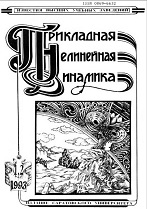|
NONLINEAR DYNAMICS AND NEUROSCIENCE
Development of an algorithm for detecting slow peak-wave activity in non-convulsive forms of epilepsy
A. S. Belokopytova, M. M. Makarovaa, M. I. Salamatina, O. M. Redkozubovab
a National Research University Higher School of Economics, Moscow, Russia
b National Research University of Electronic Technology, Moscow, Russia
Abstract:
The purpose of this study is to develop a classifier capable of detecting typical absence seizures in real-time using electroencephalogram (EEG) data and a Support Vector Machine (SVM) model. Methods. Sections of the EEG, previously identified by a specialist as containing typical absences, were used to train the SVM model. Key features for classification include the number of zero crossings, cross-correlation between two consecutive windows, spectral power across various frequency bands, and the standard deviation of instantaneous signal power. Results. Training and testing datasets were established, consisting of EEG windows with various types of artifacts. The SVM model was successfully trained and tested, achieving high performance metrics. The developed algorithm can be integrated into a mobile application and used in conjunction with a wearable EEG device with dry electrodes for real-time detection of typical absences. Conclusion. The study results affirm the potential for using machine learning techniques for the automatic detection and logging of epileptic activity. However, additional testing on a larger dataset is needed for more conclusive results, including data acquired through a wireless EEG device using dry electrodes. Future work will involve selecting a suitable EEG device and developing a mobile application for real-time data collection and analysis.
Keywords:
absence epilepsy, Support vector machine, dynamic classifier, electroencephalography, real-time detection, machine learning
Received: 13.09.2023
Citation:
A. S. Belokopytov, M. M. Makarova, M. I. Salamatin, O. M. Redkozubova, “Development of an algorithm for detecting slow peak-wave activity in non-convulsive forms of epilepsy”, Izvestiya VUZ. Applied Nonlinear Dynamics, 32:2 (2024), 223–238
Linking options:
https://www.mathnet.ru/eng/ivp586 https://www.mathnet.ru/eng/ivp/v32/i2/p223
|

| Statistics & downloads: |
| Abstract page: | 27 | | Full-text PDF : | 9 | | References: | 16 |
|




 Contact us:
Contact us: Terms of Use
Terms of Use
 Registration to the website
Registration to the website Logotypes
Logotypes








 Citation in format
Citation in format 